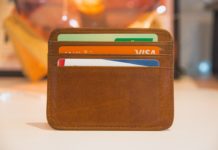In this new article you’ll learn about budgeting – specifically how to make a personal budget, how to budget your money.
I can tell you from experience that budgeting does not have to be painful and in fact I’m
going to share with you how I actually budget. So, whatever I’m talking about today is stuff I actually do. Hopefully, it can help you out, too.
At the end of the article, I’m going to share my best nine budgeting hacks that can actually help you stick to your budget during the toughest times, so stay tuned for that.
How To Make a Personal Budget
Before you actually start budgeting, you need to understand why it’s so important that you
have a budget and you use it monthly. Setting up a budget will actually give you a plan that works so that you can control your money.
Specifically if you want to get out of debt, whether it’s student loans or credit cards,
or you want to save for a downpayment on a house, or you want to redo your house or you
want to save for your kids college education – whatever it is, if you have financial goals, your budget is the roadmap that will get you from where you are now to where you want to go.
So, love ’em or hate ’em, you need to set up a budget. You can budget using an online tool – I use Personal Capital, there’s You Need A Budget, and there’s other sites like The Every Dollar app – those are great and I recommend using one if you can.
There’s lots of free options, including Personal Capital is free, that’s what I use, but I also really think it’s valuable that you set up a manual budget, whether that’s through handwriting one down through a printable or using an excel spreadsheet. I have both of those options.
I think that using a spreadsheet in addition to an online tool will help you because it will force you to update the spreadsheet every month. Without doing that, you’re not going to force yourself to sit down and then your online tool just becomes something that’s tracking your spending instead of a proactive tool that will help you achieve your financial goals.
The first thing you need to do to set up your budget is to account for all of your income. If you just have one job and you’re paid on a salary or hourly basis, this should be pretty easy. You’re just going to write down all the income you make for one month.
If you have additional income, you want to account for that as well. If you’re a babysitter, you make income blogging on the side, or any other way that you make extra money, you want to put this in the income category of your budget.
The second step to creating a successful budget is to create categories for your budget. I really recommend that you allocate room for a miscellaneous category because there
are going to be expenses that come up, especially in the beginning of your budgeting journey that you haven’t accounted for, and if you actually give yourself money in this miscellaneous category ahead of time, it will keep you form going over budget.
It’s really a life saver, and you can name it fun things, too, like the “fudge category”
of your budget or “where I’m spending too much” or just boring “miscellaneous” like I do.
Once you have all of the categories listed in your budget, you need to write down each expense within that category. If you have a living expenses category, under that category, you’re going to have your rent or your mortgage payment, your gas bill, your electric bill, your internet, maybe your phone bill – anything that it costs you to live in your house.
SEE ALSO: How To Eat Healthy On a Budget: 10 Hacks To Eat Well and Save Money
You’re going to do this for each category, so if you have a kids category, you’re going
to put all their activities under there. And you want to spend time going line by line, adding each expenses line under the category that it fits into.
If you’re not really sure where to start, or you only have a few expenses listed and
you know there’s many more that you just can’t remember, I really recommend logging into your bank account where you do the most spending, whether it’s your checking account, using your debit card, or it’s your credit card, log on and go through all of those expenses that you charged over the last month and see if they can fit into one of the categories that you’ve already listed.
If not, adjust your categories accordingly. This will make your life easier down the road because once you have this set up correctly you’re just going to project out this spreadsheet into the future for every mont, so you only have to do this once and it may seem time consuming but again, it’s totally worth it.
Once you have each of your categories and expense items set up properly, you’re going
to want to create three columns next to the categories. You’re going to want a projected column, an actual column, and the difference column.
You should know that the projected column is going to be where you put how much money you want to spend in that category. Maybe you want to spend $100 on entertainment, so you’re going to put the $100 in the projected category under entertainment.
The actual column is going to be for what you actually spend. So, maybe you stay in that month and you only spend $50 in the actual column so you’ll put $50 in the actual column for what you spent and then that difference is going to be that $50 minus $100, which would be $50. So, you were under budget by $50.
The key here is that you are projecting what you want to spend in each category every month – this is giving your money a plan, right, so instead of just tracking your money, which would be just filling out the actual column, it’s really important that you have a projected column because that’s the whole point of budgeting – it’s telling all of your income where it’s going to go before the month even starts.
It’s really really valuable.
So, again, you’re going to want to fill in a projected column, an actual column, and a difference column for each section of your budget.
Now, when you’re doing this for the first time, you may find that it’s a little more challenging because you may be doing it in the middle of the month. What I recommend doing, is starting with the month that you’re currently in and filling out the actual column for each line item in your budget.
If it’s the middle of June and you’re starting your budget, I would go through your bank account and tally in all the money you’ve spent in the actual column for your expenses. Then, I would copy and paste the excel spreadsheet into a new sheet and name it July or
whenever you’re doing it – the following month – and that’s when your’e going to project.
You’re going to project forward for the next month. So, if you only spent $50 in June on entertainment, maybe next month you’re going to project $75 instead of $100. The idea is to look at what you’re actually spending and adjust it to meet your financial goals.
What you’ll find as you’re doing this is that you think you’re spending a certain amount of money on things but you’re actually spending either much more or much less.
You may think that you’re spending roughly only $1,000 on all of your debt payments combined, but it turns out that with all your credit cards and student loan debt, you’re actually spending $2,000, so it’s really important that you include every one of your expenses, including your debt payments and including your savings in your budget.
You’ll find that when you go through each item and fill in the actual expense that you’re making every month, you’re going to be surprised. Hopefully, it’s for the better but it might be for the worse. And then as you do this, going forward, it will be a lot easier because you’ll just be more in tune and aware of what you’re spending.
As I said earlier, setting up your budget the first time is really difficult. But, once you’ve gone in and allocated your income to the right place and then gone through and allocated each and every expense in your budget, with the right dollar amount, and added up all those totals you’re going to find that either you’re over budget or under budget every month, or maybe you’re spending exactly how much you’re bringing in, but not in the places that you want.
When you do your first month’s budget, and you’re in the middle of the month, and you’re really just tracking, this is a really good time for you to think about your financial goals and set up your budget so that the next month you can project in a way that helps you succeed financially.
If you’re sort of just haphazardly spending your money and you’re not really going over budget but you don’t know what to do, I really recommend setting financial goals so that
you can adjust your budget accordingly.
You know, if you want to go on a trip to Europe next year, or you want to get out of debt,
whatever it is, write it down and then put your dollars where that part of the budget is.
If you want to get out of debt faster, find ways to cut that discretionary spending and put it into your debt payments for the next month. After you’ve added up all your totals and you get all these numbers down, you can see that you’re going to want to project this budget template out every month.
Or, if you’re writing it down handwritten, you’re going to want to get out the next month’s
piece of paper and project forward. As you do this, make um sure that you’re looking at each line item in your bank account so that you’re counting each and every dollar and penny – don’t round when you’re putting in the actual dollar amounts.
You really want to account for every dollar in your budget. It’s as easy as that, but if it was that easy, then I wouldn’t really need to write this post at all because everyone would just stick to their budgets.
SEE ALSO: How To Budget Your Money Better: The Ultimate Guide
But, the truth is, really hard to stick to your budget. So, I’ve come up with nine hacks that I really believe can help you succeed at budgeting.
1. You want to plan out your budget before the month starts.
Do not wait to July 1st to start budgeting for July. You want to do this at least by the end of June, if earlier that’s great. But you want to plan ahead of time before your money hits the bank account so you know where you’re going to be spending your money that month.
The key is planning here. Always set up your budget a month early.
2. Set up a discretionary or fudge category in your budget.
Allocate dollars to this category so that when miscellaneous things come up, you are
not thrown off your entire budget.
3. If you are a spender, seriously consider using an all cash budget.
You know if your a spender. No one has to tell you that. Please use cash if you are a spender. I actually am a big spender, I like to spend money just naturally, so I don’t use credit cards. I never have.
I’ve never had a credit card, despite everyone telling me that I need to have a credit card, I really don’t believe that I need one and I haven’t yet, so I just use my debit card as credit, or you know, some people use physical cash.
Whatever it is for you, if you’re a spender, the best way for you to not blow your budget is for you to not use a credit card.
4. Avoid your spending triggers.
If you find yourself spending money by going out to eat a lot, plan your dinners ahead of time and do meal prep. Or, if you’re like me, and your guilty pleasure is shopping, don’t fill your lunch or after work hours going to the mall.
It’s going to be too tempting for you to not spend money, so just avoid that trigger altogether, and only you know what this is – it’s going to be totally different form everyone else.
5. Master your budget is to focus on creating instead of consuming.
I did this through blogging. I focus on blogging because it’s something that allows me to be creative so that my energy is spent there instead of focused on what am I going to buy or what am I going to wear or how am I going to spend my money.
It’s a total mind shift and I really recommend it to anyone who struggles with money. If you can focus on something that allows you to express your creativity, you’ll find that you just won’t be focused on spending your money, which is awesome.
6. Talk about money with your family and friends.
If they’re aware that you’re on a budget, they will respect that so much more than if you’re hiding it or trying to avoid talking about it but not doing things, they’re really going to wonder what’s up.
Just be honest.
People — you will be so surprised how much people actually feel the same way and want to talk to you about it, too, or just respect you for your choices. I really recommend talking to your friends and family about your budget decisions.
7. Get around like minded people who are also budgeting.
It’s well known fact that you’re the average of the five people you spend the most time with, so if you get around other budget friendly people, you’re more likely to stick to your
budget as well.
8. Invest in a budgeting skills.
Now, you’re going to think, okay, well, I need to stick to a budget and not spend money, well on the other hand, you also want to invest in yourself and be smart. So, if you’re really struggling with your budget, take an online budgeting course, read an ebook, listen podcasts, etc.
I really recommend that if you’re struggling with budgeting, you know, save up some money, put it in your budget and then sign up for a course that can really help you.
I really think that you will do yourself a favor if you start reading personal finance books about budgeting because it will help you stay focused on your financial goals and really understand what you’re doing and how you can make your budget work for you.
This is what I did when I knew nothing about money and I graduated with a ton of student
loan debt — I had no idea what I was doing with money, so I really just started reading personal finance books and a few years later, I’m very confident with my budget and don’t
struggle in that way anymore.
9. Hold monthly budget meetings.
Whether it’s just with yourself or with your significant other or whoever you share a household with, it’s really important that everyone in the family household is on the same page with the budget.
It’s also equally important that you revise your budget every month. You need to be evaluating your budget. Is it working for you? Is it helping you reach your financial goals? And then you need to revise it accordingly.
Also, when you have small wins, whether it’s paying off a credit card, or a student loan, or just really crushing it that month with your budget, reward yourself.
Now, don’t go crazy, be reasonable, stick to your budget, but give yourself a reward – some positive reinforcement that you will need to keep going, because budgeting is something that’s a life long practice that there’s no end to, so you might as well make it fun.
And that’s it! Those were my nine hacks to help you stick to your budget, as well as how to create a monthly budget.











